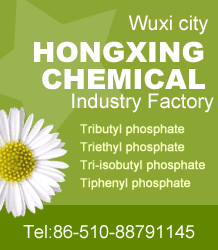Milk Thistle P.E.
Inquiry
| Post Date: | Mar 11,2013 |
| Expiry Date: | Mar 11,2014 |
| Detailed Description: |
Cas No. :22888-70-6
Quantity: 3000Kilograms Specs:80% Silymarin,30% Silibinin Payment Method: T/T or L/C Pharmacology Action: Milk Thistle is a unique herb which contains a natural compound called silymarin. Silymarin nourishes the liver like no other nutrient currently known. The liver acts as the body's filter constantly cleansing to protect you from toxins. Over time, these toxins can accumulate in the liver. Milk Thistle's potent antioxidant properties and rejuvenating actions help keep the liver strong & healthy. Milk Thistle is also known by the names Our Lady's Thistle, Marian Thistle, and Wild Artichoke. This plant is called Milk Thistle because the leaves of the plant have white veins that look as if milk was spilled upon them - according to legend, the milk of the Virgin Mary. Dioscorides wrote that Milk Thistle seeds could be used to treat snake bites. This plant is native to the Mediterranean and grows wild throughout Europe, North America and Australia. Milk Thistle has been used in Europe as a remedy for liver problems for thousands of years. The seeds were consumed by European wet nurses to insure a healthy milk supply. The heads of this Thistle formerly were eaten, boiled, treated like those of the Artichoke. Milk Thistle seeds help stimulate protein synthesis in the liver. They even can help reverse the damage done from eating poisonous mushrooms such as Death Cap (Amanita phalloides) or from carbon tetrachloride, which destroy liver cells and usually cause death. When Milk Thistle seeds are used within 48 hours, the survival rate is almost 100%. When fed to animals that had partial hepatectomies, their livers grew back more quickly. Milk Thistle is a good supplement to use to protect the liver when needing to take pharmaceutical drugs. Primary chemical constituents of Milk Thistle include flavolignans (silymarin), tyramine, histamine, gamma linoleic acid, essential oil, mucilage, and bitter principle. Milk Thistle is also an antioxidant that is more potent than vitamins C and E. |
| CAS Registry Number: | 22888-70-6 |
| Synonyms: | ;Silibinin;Silybin;silymarin group;2,3-Dihydro-3-(4-hydroxy-3-methoxyphenyl)-2-(hydroxymethyl)-6-(3,5,7-trihydroxy-4-oxobenzopyran-2-yl)benzodioxin;Silybum marianum;Silybum Extract;(2R,3R)-3,5,7-trihydroxy-2-[(2R,3R)-3-(4-hydroxy-3-methoxyphenyl)-2-(hydroxymethyl)-2,3-dihydro-1,4-benzodioxin-6-yl]-2,3-dihydro-4H-chromen-4-one;(2R,3R)-3,5,7-trihydroxy-2-[(2S,3S)-3-(4-hydroxy-3-methoxyphenyl)-2-(hydroxymethyl)-2,3-dihydro-1,4-benzodioxin-6-yl]-2,3-dihydro-4H-chromen-4-one;Milk Thistle Extract;Milk Thistel P.E.; |
| Molecular Formula: | C25H22O10 |
| Molecular Weight: | 482.4362 |
| Molecular Structure: | 
|
| Hazard Symbols: |  Xi:Irritant; Xi:Irritant; |
| Risk Codes: | R36/37/38:; |
| Safety Description: | S26:; S37/39:; |
| Company: | Changsha Huir Biological-tech Co.,ltd. [ China ] |
| Contact: | selinaliu |
| Tel: | +86-731-84686626 |
| Fax: | +86-731-84152788 |
| Email: | huir02@phyhuir.com |
-
Disclaimer statement:The information and data included above have been realized by the enterprises and compiled by the staff, and are subject to change without notice to you. The Chemnet makes no warranties or representations whatsoever regarding the facticity, accuracy and validity of such information and data. In order to ensure your interest, we suggest you chose the products posted by our gold suppliers or VIP members.


